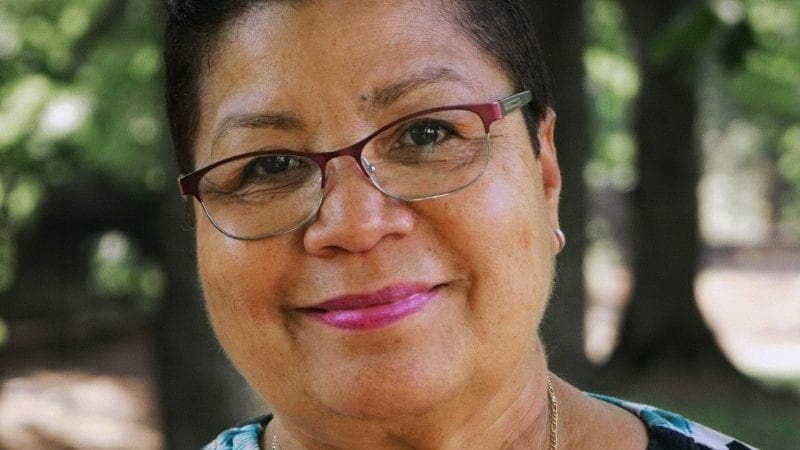When I think about voter participation — that 92 million eligible people didn’t vote in 2016 or that people with low incomes are 22 percentage points less likely to vote than people with higher incomes — I think about the personal stories behind all those numbers.
People constantly struggle with meeting basic needs around things like employment, food, housing, health care, and child care.
To get assistance, they’re forced to navigate big, public systems. Navigating systems is not an easy task, and the challenge has been exacerbated at a time when those systems are overwhelmed.
When I see the struggles people face today, I remember my own personal experiences. And I see similar things happening to many people in my neighborhood in Lawrence, Massachusetts.
When COVID-19 hit back in March, one of my neighbors applied for emergency food assistance. She had to apply online — a new system not familiar to her. She didn’t fill out the form right, which had huge consequences. She had to wait a full month to get the benefits.
I remember when I was a welfare recipient. Navigating systems was not an easy task, and things have not changed much. The caseworker assigned to me made significant decisions about my life that affected benefits, job training programs, and access to services.
Paperwork and forms played a big role in these decisions.
Not filling out the forms the right way, or not filling them out on time, can have huge consequences when you’re receiving services. There are also times when you can be told you just didn’t qualify for something and don’t know why.
You can feel just powerless.
There’s a connection to experiences like these and voting.
For many people, voting is just one more encounter with a large, complex public system with its own elaborate rules: another opportunity to face negative repercussions because you didn’t fill out a form the correct way, another chance to be told “no” because you don’t have the appropriate type of ID. Many people conclude it’s better to stay away from the whole system entirely.
I wanted to share this personal reflection because it speaks to the many unseen and under-appreciated reasons people choose not to vote.
The Right Question Institute’s “Why Vote?” work is not a get-out-the-vote initiative in the traditional sense. Those efforts are critically important and often logistical in nature: How do you make sure people receive reminders about election day and have transportation to the polls? How do you get information into the voters’ hands at the right time?
We’ve created the “Why Vote?” Tool to complement these efforts. It’s designed to help people feel a sense of urgency to vote, and it leads them to becoming more motivated and determined to vote. When they feel that, existing get-out-the-vote initiatives can be more successful.
How can people’s personal experiences help them see the connection between services they need, decisions made by elected officials, and voting? How do you give people the opportunity to articulate for themselves the concerns and fears they have when it comes to voting? How do you give people the opportunity to name for themselves why they want to vote? How can you make sure people have an opportunity to ask questions about voting you may not anticipate?
Although the “Why Vote” Tool fits on just two pages, it pulls together 30 years of personal and professional lessons from work in low-income communities around the country. We believe it can strengthen a wide range of voter-engagement efforts happening right now. We are working to get the tool into the hands of as many organizations as possible so that staff and volunteers can help others see for themselves the value of voting — in 2020 and beyond.
Thank you for letting me share this personal reflection with you, and if you want to learn more or be part of this effort, please reach out.
About the author: Luz Santana is co-director of the Right Question Institute. She leads RQI’s “Why Vote?” voter engagement program, which builds self-advocacy skills while strengthening people’s sense of urgency around voting. Santana is co-author of Make Just One Change: Teach Students to Ask their Own Questions and Partnering with Parents to Ask Their Own Questions.
